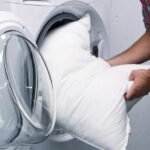Garment Flame testing is an important process in the textile industry to ensure the safety of workers at risk of exposure to flame, fire and other electrical equipment. Fireproof clothing can reduce the risk of injury or death in a fire.
Test procedure consists of exposing the garment to flame for a specified period of time and observing its behavior. Then the fire resistance of the garment is measured according to many factors such as the burning time of the fabric, how fast the flame burns and how long it stays hot. There are many international standards that specify requirements for flame retardant clothing such as ASTM D6413, NFPA 2112 and NFPA 70E.
Clothing that meets these standards is certified flame retardant and suitable for use in hazardous workplaces.
Vertical Burn Test
Vertical Burn Test The Vertical Burn Test is one of the most widely used methods to measure the flame resistance of textiles. This test involves hanging a textile sample vertically and exposing it to flame for a certain period of time.
The test measures the time it takes for the fabric to ignite, how fast the flame spreads, and whether the flame goes out on its own.
In the United States, vertical fire testing is based on the Combustible Fabrics Act (FFA) and the Consumer Product Safety Improvement Act (CPSIA). The CPSIA sets additional standards for children’s products, including lead and phthalates allowed in products.
EU Flame Retardant Standard
The European Union has set requirements for flame retardancy of clothing and textiles.
The REACH Act, which stands for Registration, Evaluation, Authorization and Restriction of Substances, is one such law. REACH aims to protect human health and the environment by regulating the use of chemicals in the production of textiles and other products.
The European Union also has fire safety standards, including EN ISO 6941, which measures the flame spread of materials. This test involves placing a textile sample horizontally and exposing it to flame for a specified period of time. The test measures the time it takes for the fabric to burn, how fast the flame spreads, and whether the flame goes out on its own.
Contact Heat Test
Another test method used to measure the flame resistance of materials is contact temperature. This test involves exposing a textile sample to a heat source for a specified period of time. This test measures how long it takes for a fabric to ignite and whether the fabric is self-extinguishing.
Children’s Clothing Regulatory Requirements

US and EU regulations set minimum standards for children’s clothing. In the United States, the Combustible Fabrics Act and the Consumer Product Safety Improvement Act set the standards for children’s clothing.
The regulation applies to all clothing, including pajamas, and sets the maximum temperature and time for the fabric to extinguish itself after the fire is extinguished.
In the European Union, the REACH regulation sets standards for the flammability of textiles, including children’s clothing. The law prohibits the use of harmful chemicals in textile production and obliges companies to provide information about the chemicals used in their products.
Importance of proper testing
Proper testing is essential to ensure the safety of baby clothes. Flame retardant clothing can prevent serious injury and save lives.
Using the right testing methods can help companies identify potential hazards in their products and make the necessary improvements to meet regulations and standards.
In addition to regulations, manufacturers must take into account the risks associated with their products and implement the necessary measures to ensure the safety of their users’ goods. By successfully testing and complying with regulations, companies can demonstrate their commitment to safety and gain the trust of consumers.
Limitations of Flame Test
While flame testing is important for ensuring the safety of baby clothes, it has some limitations. One limitation is that the test cannot guarantee complete fire protection.
Flame resistant clothing can still catch fire if exposed to heat or fire for a long time. Also, the test conditions may not repeat the actual situation.
Another limitation is that some chemicals used as flame retardants, such as halogenated flame retardants, raise concerns about the environmental and health effects. For this reason, some organizations have called for improved security, more security.
Conclusion
In conclusion, Garments Flame Resistance Testing is a critical process in the textile industry that ensures the safety of workers who work in hazardous environments. It is essential to follow the relevant standards and guidelines to ensure that the flame-resistant clothing provides the necessary protection to workers.






